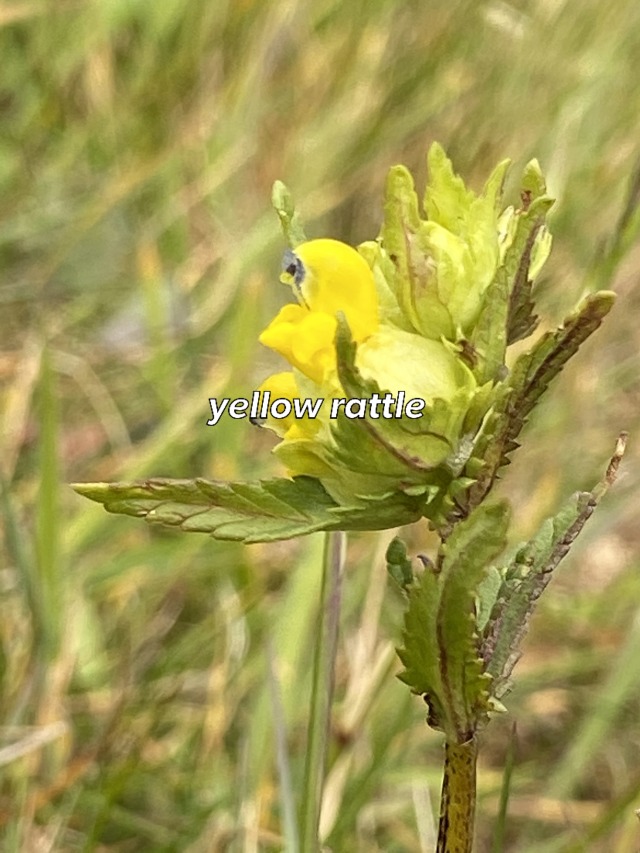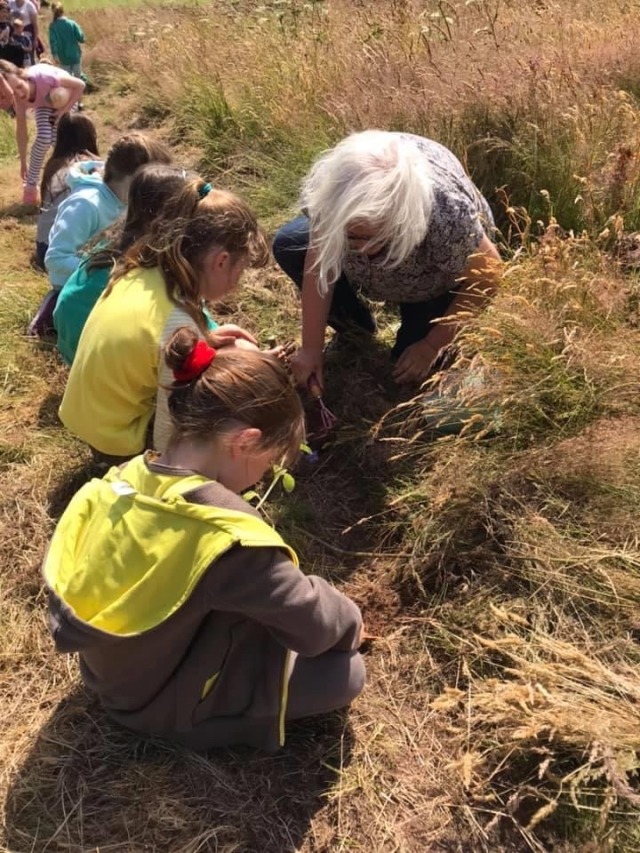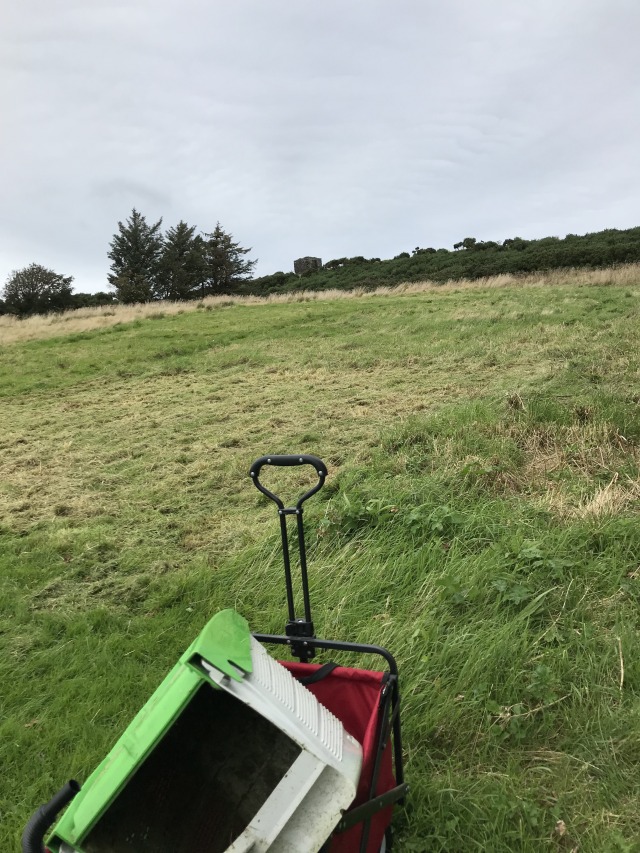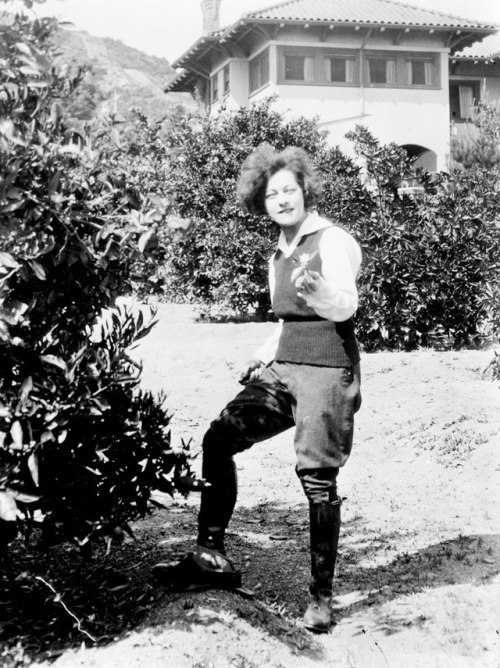#wlw gardening
My garden got a shout out in the FT about the importance of the names assigned to plants. Glad someone gets the joke about my cultural floral salon of feisty historical women amongst the yew hedges.

Subscribe to read | Financial Times

I do do other things than just transcribe all day. Amongst them is gardening. I have a longish side project going on where I managed to convince the commissioners of the local parish to let me turn ¼ acre of the hilly section of a common field into a wild flower meadow.
I started late in 2018. And tried lots of fun methods to get it going. First was seed bombs. Nada. The grass and existing plants out competed the seeds. They blew in the wind to other parts of the village so Fox and Cubs and poppies etc sprung up lane verges and on the paths of the graveyard, following the direction of the prevailing wind.

I froze thousands of yellow rattle seeds to try to acclimatise them and break their dormancy.

It is a semi parisitic flower that weakens grass. It is also notoriously difficult to germinate and it only germinates from the previous year’s seeds. Shelf life miniscule. I was like I’ve germinated Himalyan poppies this will be a piece of cake. Er, no. ££ sunk in and nada. Yellow rattle rage is a thing apparently.
Meanwhile, the field in spring was showing up with dandelions, buttercups, daisies, plaintain and ground elder. Nothing special and in comparison to the tussocky unkept parts of field not much different for biodiversity. Thus proving, wildflower growing is not as easy as let go and leave. So more reading on meadow management.
In the summer, we cut out a trefoil outline and turned it over with a cultivator to see if flower seeds might germinate on that. More seed sowing, but dandelions and ground elder soon colonized.
Luckily, plan d, was a bunch of seeds I had grown at home. With the with the help of a lovely Brownie pack we pricked out, grew on and planted 100 plants. Little tooth pick flags were used to identify them and like a lunatic I had to individually visit them and water them for a week (hence the trefoil path and flags so they could be easily found) until the rain finally came to take over their settling in process. We added marguerite and cornflowers, borage and red clover successfully established.


But the factor that made all the difference was in someways the most obvious: meadow management. In late summer, I went out with a strimmer. It took five days to strim the whole area back. I worked slowly to encourage, voles, lizards and beetles to head for the tussocks. I burned my arms on giant hogweed sap mistaking its umbelliferous form for the ubiquitous ground elder.

Next our domestic mower set to high and another week of spent mowing and collecting the grasses into mounds for drying. Once dried, they could be rolled onto tarp to be dragged to the massive composting heap. Removing any cut great matter was my best chance of weakening the current sward to give the plants a fighting chance. After that fortnight, I was shattered, sweaty, burnt, dusty heap myself.

A small envelope of local island yellow rattle free from the Manx Wildflower Trust did germinate and now this spring I’ve spotted a dozen or so making their appearance.
At the end of February another much easier cut (only 2 days of backbreaking work). So finally come this spring we have our usual display of the old familiars but hello to some newbies. Last years’ wild flowers planted by the Brownies have also filled out.



Lockdown has resulted in only being allowed a short visit so I tried painting seeds onto loo roll and leaving ribbons of loo paper on the path topping them with seed compost but four weeks of no rain has made this look detritus from a Halloween after party.

Walking the dog, I have been out with a weed puller just to knock back the ground elder a bit. Will take on other plants that tend to dominate the sward later.
I plan to stash another 100 plants on the cultivated path section (all again grown from seed to healthy plugs). Then the summer cut is essential to disperse their seeds and further weaken the grass and remove more nutrients as wild flowers favour poor soil.
My advice; assume a five year process. Cut and remove clippings twice a year. Get a cultivator and turnover a working path for planting little wild flower plugs you’ve grown yourself. Get local yellow rattle, do not waste your cash on other supplies as reliability is poor and there is no way of check yours is from this year’s crop. And do make little toothpick flags and invest in a watering tank back pack or hope to heck there is a water outlet near by. Best of luck.
“Alla Nazimova bought a mansion surrounded by three and a half acres of poplar, cedar, and fruit trees, at 8080 Sunset Boulevard at Crescent Heights Boulevard, and christened it the Garden of Allah. Her guests called her Madame and were forbidden to bid her goodnight because she believed the words brought her bad luck. She created a “moon parlor” and had the swimming pool shaped in the form of the Black Sea. The Garden of Allah was a notorious rendezvous for celebrity trysts. Mary’s, also owned by Nazimova, was a dyke bar on the Sunset Strip opposite Café Gala, a gay bar that by the 1930s was home away from home for Cole Porter.“
Post link

So idiot me is reworking our garden which like Anne Lister involves lots of yew. In honour of her I’ve decided to cross breed and develop this tree peony below (to improve the depth of the dark pigmentation in the centre) so that I can name it Paeonia rockii “Anne Lister”. It’ll only take like, erm, five years. It’ll have pride of place in my fernery:


